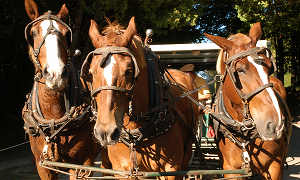 Recently I’ve begun updating the images in my colors section and getting in touch with the times when it comes to color. It’s a complicated ride, but it sure is a pretty one!
Recently I’ve begun updating the images in my colors section and getting in touch with the times when it comes to color. It’s a complicated ride, but it sure is a pretty one!
Basic Colors
Coloring in horses comes from a pigment called melanin which appears in two forms, eumelanin (black) and phaeomelanin (red). These two expressions are responsible for the two base horse colors, black and chestnut. All other coat colors come from an interaction between these two genes and that of various modifiers, dilutions and white patterns.
The Chestnut Rainbow
Chestnut animals are also called sorrel and regardless of their actual coat color, chestnut animals are all the same when it comes to color genetics. Two chestnut animals will always produce chestnut offspring making them incredibly common in most breeds.

Chestnut Shades
There are a variety of red coat shades that are associated with chestnut animals, from light golden red to red so dark it’s almost black. Although there are a lot of colors, most fall under three basic categories, liver or black chestnut, sorrel or red chestnut and light blonde or sandy chestnut.
Mane and tail color can range from darker than body hair to flaxen blonde. Chestnuts can be mistaken for everything from silver dapple to palominos.
Learn More About Color
Be sure to visit the new and improved color section for more information about chetnut horses and stay tuned, next week we’ll take a look at the other base color, chestnut.